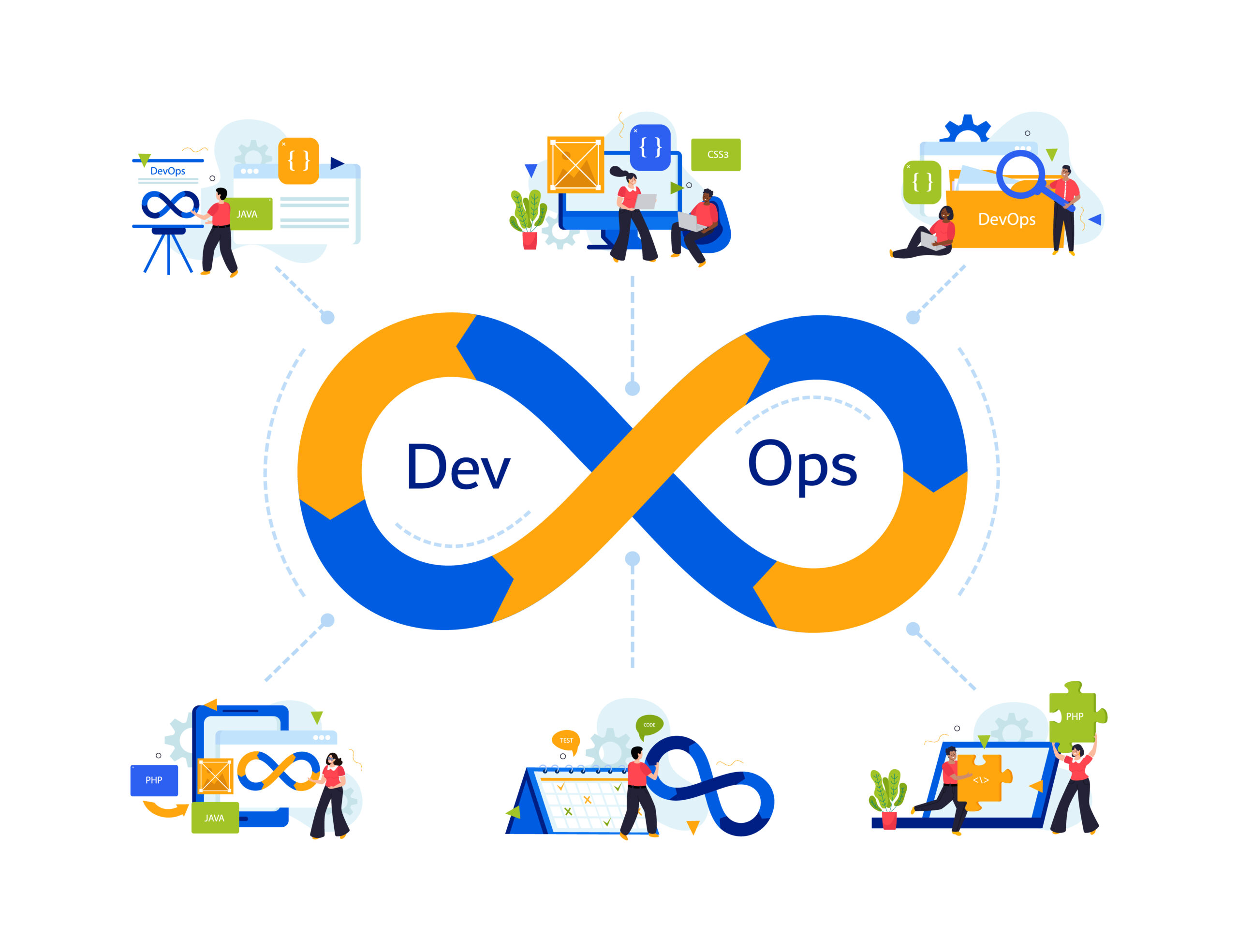In today’s fast-paced software landscape, delivering high-quality applications quickly and reliably is paramount. This is where streamlining development to deployment using DevOps and Continuous Integration/Continuous Delivery (CI/CD) come into play. These methodologies transform how software is built, tested, and deployed, enabling organizations to achieve a competitive edge through rapid iteration and delivery.
DevOps: Bridging the Development and Operations Gap
DevOps is a cultural shift emphasizing collaboration, communication, and automation between development (Dev) and operations (Ops) teams. Traditionally, these teams operated in silos, leading to bottlenecks and inefficiencies in the software delivery process. DevOps breaks down these silos by fostering a shared responsibility for the entire software lifecycle, from conception to deployment.
Here are some key DevOps practices that contribute to a streamlined workflow:
- Infrastructure as Code (IaC): This approach treats infrastructure provisioning and configuration as code, allowing for automated deployment and management of servers, networks, and other infrastructure components.
- Version Control: Tools like Git enable developers to track code changes, collaborate effectively, and revert to previous versions if necessary.
- Configuration Management: Tools like Ansible or Puppet automate the configuration of servers and applications, ensuring consistency across environments.
- Monitoring and Logging: Continuous monitoring of applications and infrastructure helps identify and address issues promptly.
CI/CD: The Engine of Efficient Delivery
CI/CD is a set of practices that automate the software delivery pipeline. It comprises two key stages:
- Continuous Integration (CI): Developers frequently integrate the code changes into a shared repository. This triggers automated builds, tests, and static code analysis, providing early feedback on potential issues.
- Continuous Delivery (CD): Following successful CI, the code is automatically deployed to a staging or testing environment. Once approved, it can be seamlessly deployed to production with minimal manual intervention.
Benefits of DevOps and CI/CD: Faster Releases, Happier Customers
By adopting DevOps and CI/CD, organizations can reap significant benefits, including:
- Increased Release Velocity: Faster feedback loops and automation enable more frequent deployments, allowing businesses to respond to market demands quickly.
- Improved Software Quality: Early detection and resolution of bugs through automated testing leads to higher-quality releases.
- Reduced Risk: Automation minimizes human error and ensures consistency throughout the delivery process.
- Enhanced Collaboration: DevOps fosters closer cooperation between Dev and Ops teams, leading to a more unified approach to software development.
- Increased Team Productivity: Automation frees developers and operations personnel from repetitive tasks, allowing them to focus on higher-value activities.
Best Practices for Implementing DevOps and CI/CD
A successful DevOps and CI/CD implementation requires careful planning and adherence to best practices:
- Start Small and Scale Up: Begin by automating small portions of the development pipeline and gradually expand as the team gains experience.
- Invest in Tools and Technologies: Utilize CI/CD tools like Jenkins, GitLab CI/CD, or CircleCI to streamline the automation process.
- Focus on Continuous Feedback: Encourage a culture of feedback loops where information from testing and monitoring is used to continuously improve the process.
- Measure and Analyze: Track key metrics such as deployment frequency, lead time for changes, and defect escape rate to measure progress and identify areas for improvement.
Tools and Technologies for DevOps and CI/CD Success
Numerous tools and technologies support the DevOps and CI/CD approach:
- Version Control Systems (VCS): Git, Subversion
- Configuration Management Tools: Ansible, Puppet, Chef
- CI/CD Tools: Jenkins, GitLab CI/CD, CircleCI, Travis CI
- Containerization Technologies: Docker, Kubernetes
- Infrastructure as Code Tools: Terraform, CloudFormation
These tools and a commitment to collaboration and automation empower teams to achieve a DevOps and CI/CD nirvana – a state of continuous improvement, rapid delivery, and high-quality software that fuels business success.
Conclusion: The Future of Software Development is DevOps and CI/CD
In conclusion, DevOps and CI/CD are not just trends, but essential practices for modern software development. By embracing these methodologies, organizations can streamline their development lifecycles, deliver high-quality applications faster, and gain a competitive edge. As technology evolves, DevOps and CI/CD will continue to play a pivotal role in shaping the future of software development.
For recommended books on DevOps, click here
Other programming book recommendations:












